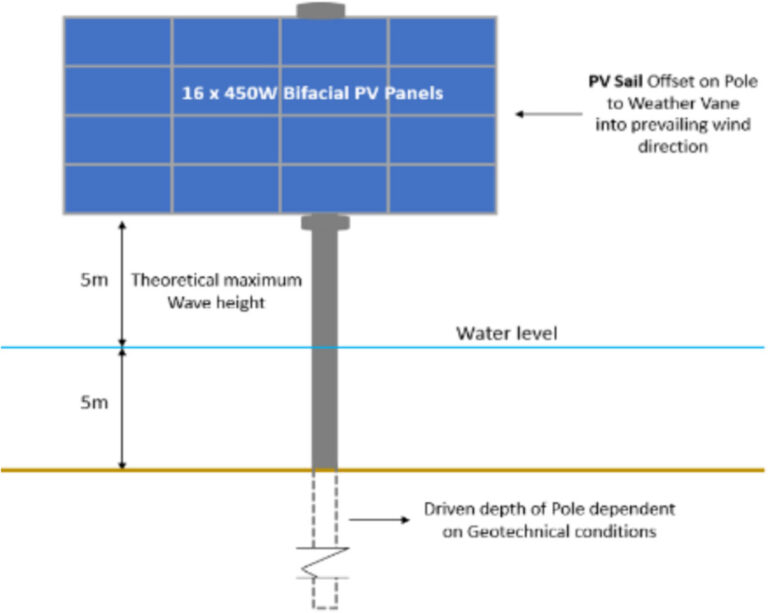An international group of scientists has designed a patented mooring technology and vertical PV system that reportedly allows the two-sided solar panels to adapt to the prevailing wind direction to shed wind loads. Depending on the scope of a project, the system can deliver different power yields.
An international research group has developed a vertical PV system design for applications in offshore waters.
The new system, called PVSail, allows the floating structure to align with the prevailing wind direction to shed wind loads.
“SolarMarine Energy’s patented system minimizes the environmental impact of both wind and waves,” said corresponding author Giuseppe Marco Tina. pv magazine. “We are currently completing an extensive series of tank tests and small-scale testing in inland waters. A large-scale demonstration deployment near the coast is planned for 2025.”
The PVSail relies on a strong anchoring system, where the attached pole can rotate and change the orientation of the PV panels in accordance with wind and wave forces. The researchers, some of whom are part of the SolarMarine Energy company, expect it to be relatively cheap in shallow water up to 5 meters.
“Due to the fact that the system is constantly moving with respect to the wind, the efficiency of PV modules largely depends on the azimuth angle, which is not fixed but determined by the dominant wind direction,” the team points out.
To investigate the feasibility of such a system, the researchers conducted a numerical analysis of two cases, both with identical PV panels. While one case considered a fixed azimuth yielding the most energy, representing a fixed system, the second case represented the moving sail, with the azimuth changing from 0 to 180 degrees. Both cases were simulated under the conditions of Catania, Italy, and Nigg Bay, United Kingdom. In the sailing case the tilt angle was 10, 20 or 30 degrees. In all cases the water albedo was assumed to be 0.07.
“Comparisons of unitary AC energy yields between the vertical systems with variable azimuth angles and south-facing tilted PV systems in Catania and Nigg Bay indicate a reduced energy yield of approximately 9% and an increase of approximately 5% respectively,” the academics said . “Shadow effects of design choices were not included in this study.”
The group also explained that while the reduced impact of water albedo is limited, it significantly benefits high latitudes above 40 degrees, where a vertical bifacial module with a 90 degree azimuth and adjusted albedo provides a similar energy yield to a standard PV module tilted at 20 degrees. .
The system was described in “PVSails: Harnessing innovation with vertical bifacial PV modules in floating photovoltaic systems”, published in Progress in photovoltaics. The research was carried out by scientists from Italy’s University of Catania and engineering firm Koiné Multimedia SAS, Egypt’s Port-Said University and Ireland-based SolarMarine Energy.
This content is copyrighted and may not be reused. If you would like to collaborate with us and reuse some of our content, please contact: editors@pv-magazine.com.


